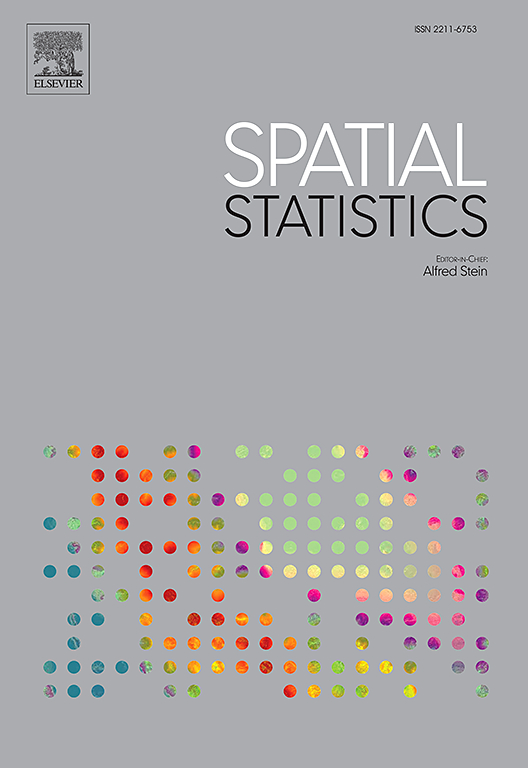Nonparametric approaches for direct approximation of the spatial quantiles
IF 2.5
2区 数学
Q3 GEOSCIENCES, MULTIDISCIPLINARY
引用次数: 0
Abstract
The estimation of the spatial quantiles provides information on the thresholds of a spatial variable. This methodology is particularly appealing for its application to data of pollutants, so as to assess their level of risk. A spatial quantile can be approximated through different mechanisms, proposed in the statistics literature, although these approaches suffer from several drawbacks, regarding their lack of optimality or the fact of not leading to direct approximations. Thus, the current work introduces alternative procedures, which try to overcome the aforementioned issues by employing order statistics, similarly as done for independent data. With this aim, the available observations are appropriately transformed to yield a sample of the process at each target site, so that the data obtained are then ordered and used to derive the spatial quantile at the corresponding location. The new methodology can be directly applied to data from processes that are either stationary or that deviate from this condition for a non-constant trend and, additionally, it can be even extended to heteroscedastic data. Simulation studies under different scenarios have been accomplished, whose results show the adequate performance of the proposed estimators. A further step of this research is the application of the new approaches to data of nitrogen dioxide concentrations, to exemplify the potential of the quantile estimates to check the thresholds of a pollutant at a specific moment, as well as their evolution over time.
直接逼近空间分位数的非参数方法
空间分位数的估计提供了关于空间变量阈值的信息。这种方法特别有吸引力,因为它适用于污染物的数据,以便评估它们的风险水平。空间分位数可以通过统计文献中提出的不同机制进行近似,尽管这些方法存在一些缺点,例如缺乏最优性或无法直接近似。因此,目前的工作引入了替代程序,这些程序试图通过使用顺序统计来克服上述问题,类似于对独立数据所做的。为了达到这个目的,对现有的观测结果进行适当的转换,以产生每个目标地点的过程样本,以便对获得的数据进行排序,并用于推导相应位置的空间分位数。新方法可以直接应用于平稳或偏离此条件的非恒定趋势过程的数据,此外,它甚至可以扩展到异方差数据。在不同的场景下进行了仿真研究,结果表明所提出的估计器具有良好的性能。这项研究的下一步是应用二氧化氮浓度数据的新方法,以举例说明分位数估计在特定时刻检查污染物阈值的潜力,以及它们随时间的演变。
本文章由计算机程序翻译,如有差异,请以英文原文为准。
求助全文
约1分钟内获得全文
求助全文
来源期刊

Spatial Statistics
GEOSCIENCES, MULTIDISCIPLINARY-MATHEMATICS, INTERDISCIPLINARY APPLICATIONS
CiteScore
4.00
自引率
21.70%
发文量
89
审稿时长
55 days
期刊介绍:
Spatial Statistics publishes articles on the theory and application of spatial and spatio-temporal statistics. It favours manuscripts that present theory generated by new applications, or in which new theory is applied to an important practical case. A purely theoretical study will only rarely be accepted. Pure case studies without methodological development are not acceptable for publication.
Spatial statistics concerns the quantitative analysis of spatial and spatio-temporal data, including their statistical dependencies, accuracy and uncertainties. Methodology for spatial statistics is typically found in probability theory, stochastic modelling and mathematical statistics as well as in information science. Spatial statistics is used in mapping, assessing spatial data quality, sampling design optimisation, modelling of dependence structures, and drawing of valid inference from a limited set of spatio-temporal data.
 求助内容:
求助内容: 应助结果提醒方式:
应助结果提醒方式:


